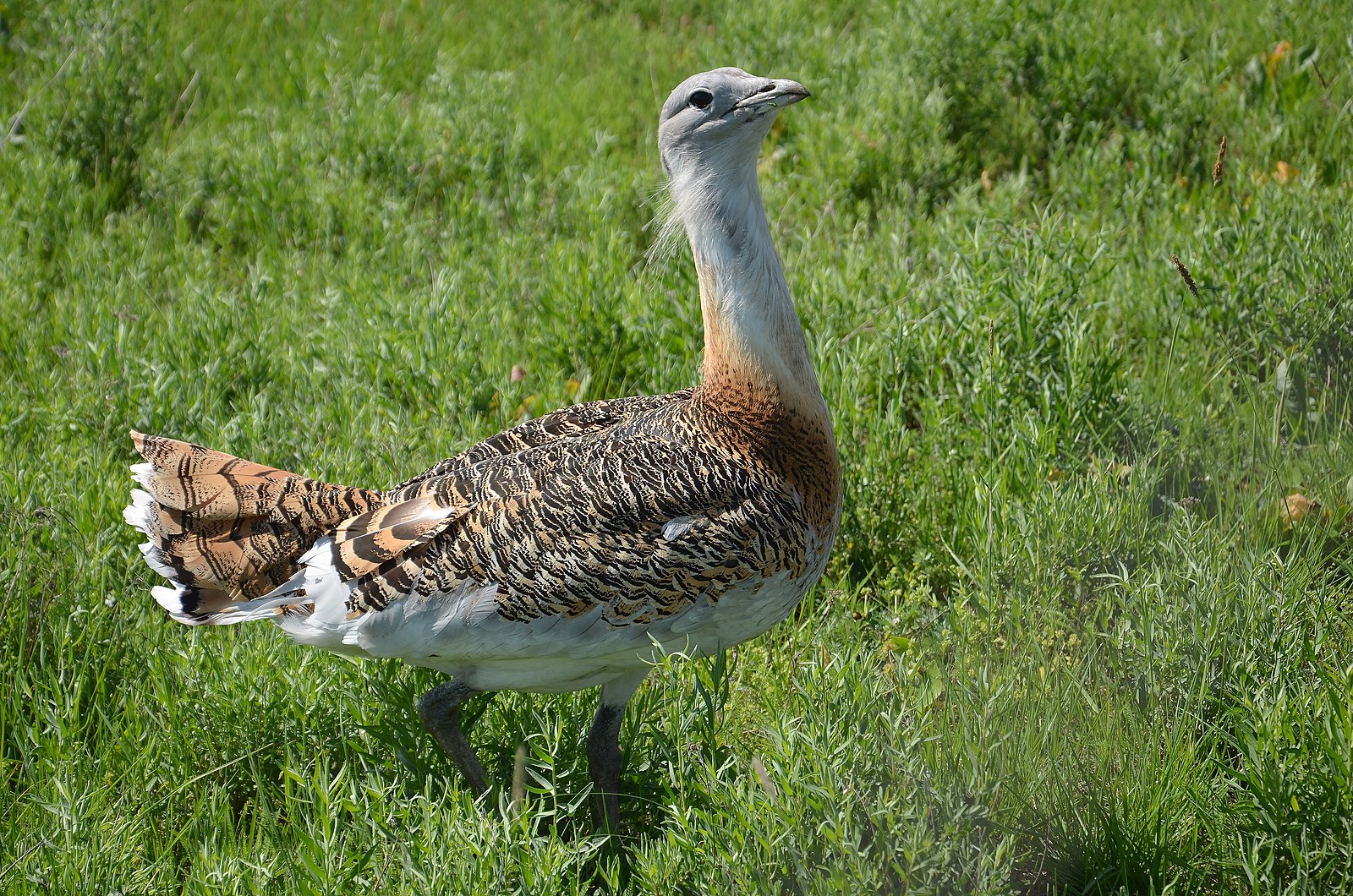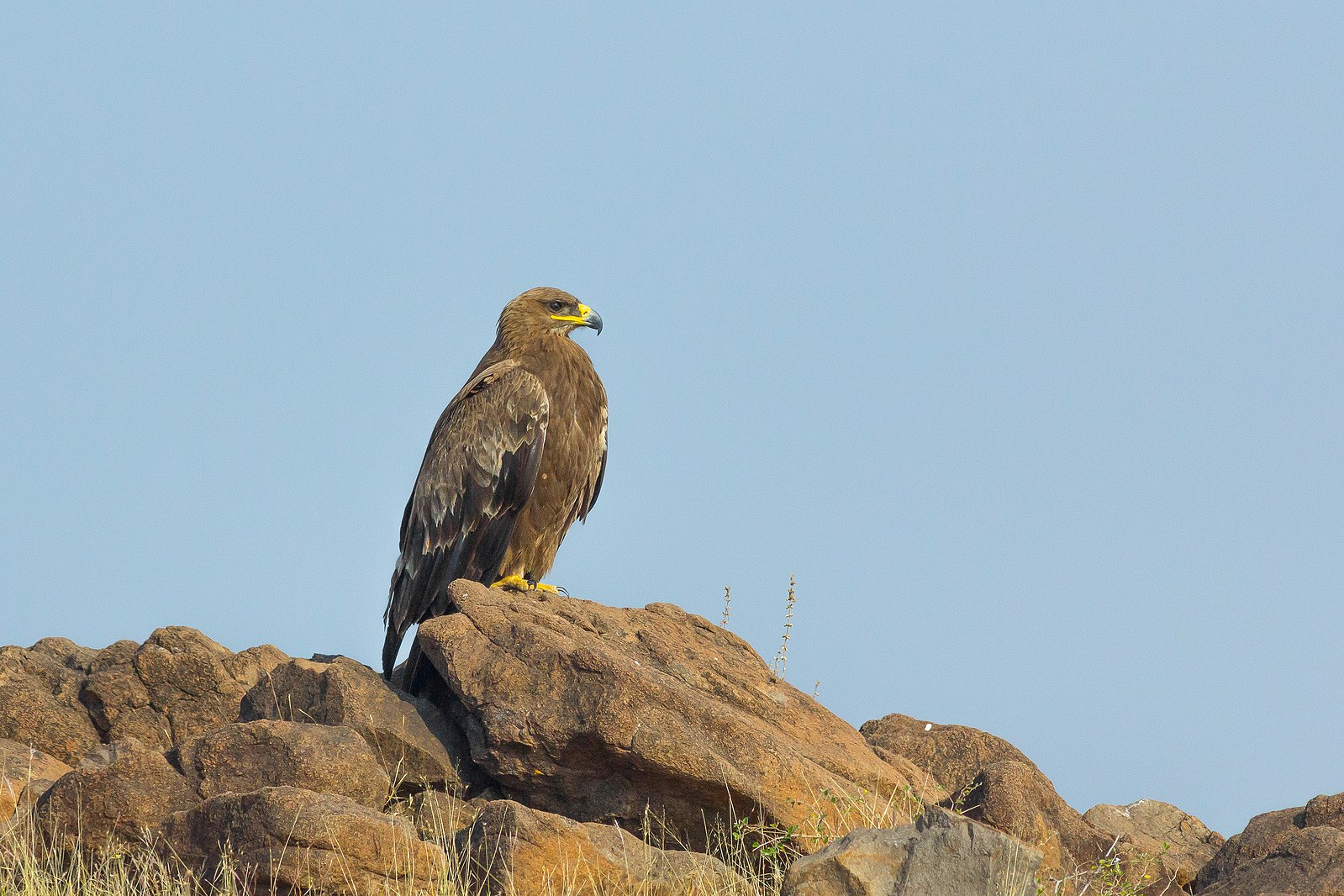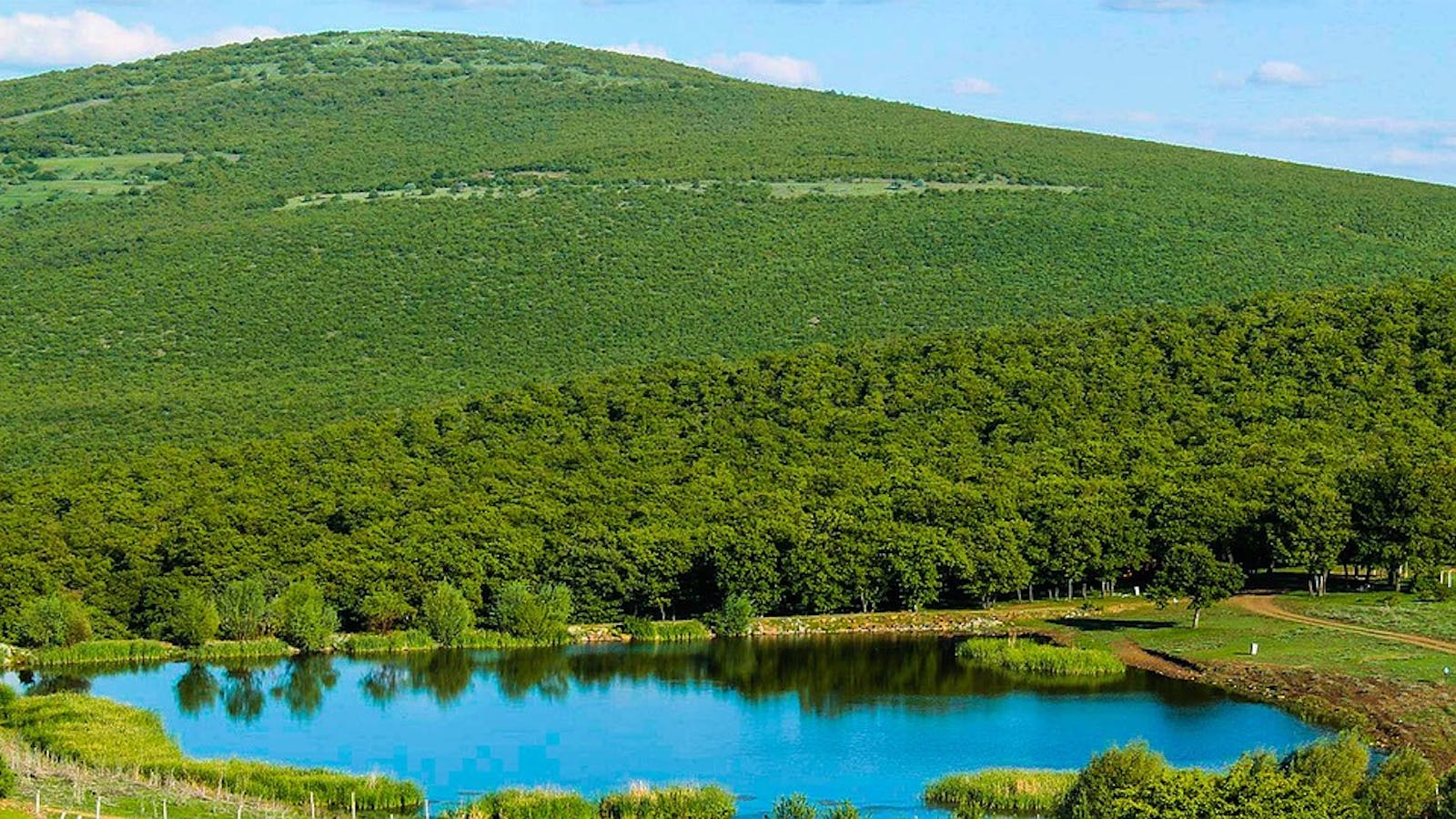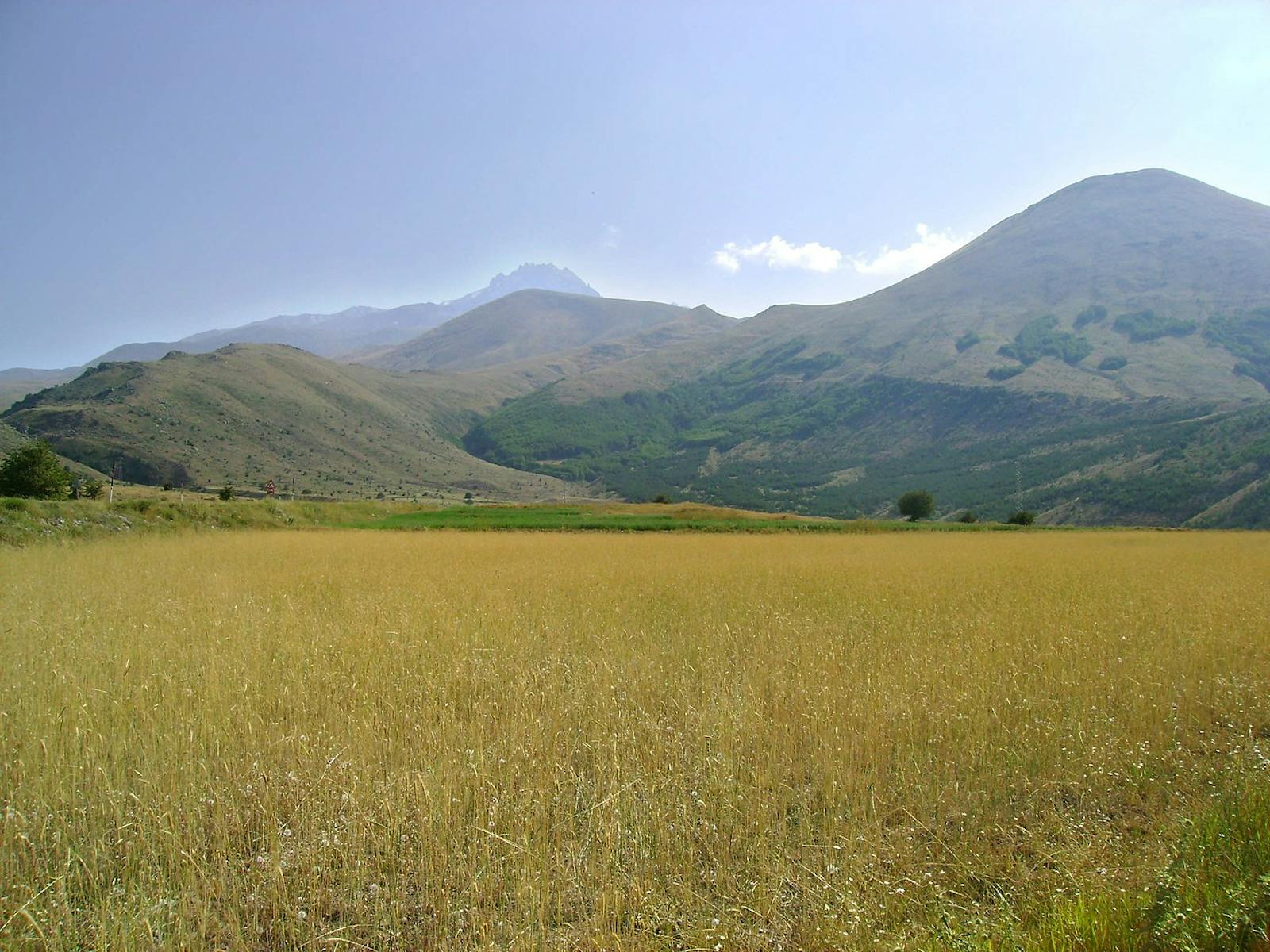Central Anatolian Steppe and Woodlands
The ecoregion’s land area is provided in units of 1,000 hectares. The conservation target is the Global Safety Net (GSN1) area for the given ecoregion. The protection level indicates the percentage of the GSN goal that is currently protected on a scale of 0-10. N/A means data is not available at this time.
Bioregion: Black Sea, Caucasus-Anatolian Mixed Forests & Steppe (PA17)
Realm: Western Eurasia
Ecoregion Size (1000 ha):
10,164
Ecoregion ID:
652
Conservation Target:
11%
Protection Level:
0
States: Turkey
Woodland-scattered steppes abound in Anatolia’s dry central plateau. This gently sloping expanse is peppered with lakes and ponds, offering ample breeding grounds for a diversity of waterfowl. Brilliantly colourful marbled polecats scurry in the rocky hillsides, whilst majestic Egyptian vultures soar overhead—highly intelligent, these are the only raptors known to use tools. The striking great bustard, the heaviest flying animal on the planet, dwells in the region’s grasslands.

The flagship species of the Central Anatolian Steppe and Woodlands ecoregion is the great bustard. Image credit: Creative Commons
This region occupies Central Turkey, bounded by the Pontic Mountains in the North and the Taurus Mountains in the South. Hot, dry summers and cold, snowy winters typify the semi-arid continental climate, though this dry landscape is interrupted by numerous wetlands; Lake Beysehir in the western Konya Basin is the largest natural freshwater lake in Turkey.
Plains and tectonic depressions support steppes, surrounded by oak shrublands, juniper woodlands, and wild orchards. Pine forests occur at higher elevations, with substantial stands of Anatolian black pine growing in the south. This ecoregion hosts the UNESCO World Heritage Site of Göreme National Park and the Rock Sites of Cappadocia, a volcanic landscape that has been sculpted by erosion to form a spectacular succession of mountain ridges, valleys, and pinnacles known as fairy chimneys.

Steppe eagle. Image credit: Creative Commons
Endemic mammals include Doğramaci's vole and Anatolian vole, the latter of which is found in Konya Province, where its habitat is increasingly exploited for sugar beet cultivation. The beautiful blue is an endemic butterfly, whilst the plants Muscari adili and Astragalus beypazaricus are endemic to the Ankara region. Many birds are reliant on the steppes, including steppe eagle, saker falcon, little bustard, sociable lapwing, and the globally threatened great bustard.
Populations of great bustard are decreasing; conversion of land for arable farming and infrastructure development has caused loss of habitat, whilst irrigation methods, pesticides, hunting, and destruction of nests by mechanized farming jeopardize breeding success. In the North, the Kirmir Valley holds a globally significant population of Egyptian vulture, with more than 100 pairs nesting in the cavities of this region’s steep cliffs.
This ecoregion was part of ancient East-West travel routes, and has a long history of human settlement. Livestock keeping is one of the oldest livelihood practices in Anatolia, hence grazing by sheep and cattle has become part of steppe ecosystem dynamics, and rangeland grazing is still widespread today. Additionally, large tracts of steppe have been converted to cropland.
Woodlands and scrub have been cleared and grazed, favoring the formation of secondary steppe that is dominated by laurel-leaved cistu, and interspersed with oak, pine, and juniper remnants. There are very few protected areas, and those that do exist are small; Lake Seyfe and the Sultan Marshes are Ramsar Sites and Wetlands of International Importance.
Livestock practices are becoming increasingly damaging to the ecoregion. Large, productive ruminants are replacing small, local breeds, and a change in grazing patterns has led to overgrazing around villages and water sources. Livestock density in Central Anatolia is two times higher than the carrying capacity of the land.
The Rangeland Act exists to ensure sustainable use of rangelands, but it is poorly implemented, whilst a strictly enforced Terrestrial Hunting Law seeks to tackle the persistent threat of illegal hunting to species such as large herbivores and great bustard. Agricultural intensification reduces food availability for Egyptian vultures, so the Turkish conservation organization, Doğa, is working with local communities to regenerate vulture-friendly traditional pastoralism.
The priority conservation actions for the next decade will be to: 1) form government units dedicated to conservation of steppe ecosystems; 2) gather sufficient ecological knowledge on the impacts of grazing intensity on conservation target species; and 3) restore steppe and woodland ecosystems and reintroduce rare species to re-establish historic populations.
Citations
1. Ambarlı, D., Zeydanlı, U.S., Balkız, Ö., Aslan, S., Karaçetin, E., Sözen, M., Ilgaz, Ç., Ergen, A.G., Lise, Y., Çağlayan, S.D. and Welch, H.J., 2016. An overview of biodiversity and conservation status of steppes of the Anatolian Biogeographical Region. Biodiversity and conservation, 25(12), pp.2491-2519.
2. European Environment Agency (2008). The Anatolian region - the biogeographical transition to Asia. Europe's biodiversity - biogeographical regions and seas.
3. WWF. 2018. Turkey. [Online]. [Accessed 23rd May 2019]. Available from: https://www.worldwildlife.org/ecoregions/pa0420


.png?auto=compress%2Cformat&w=300)

